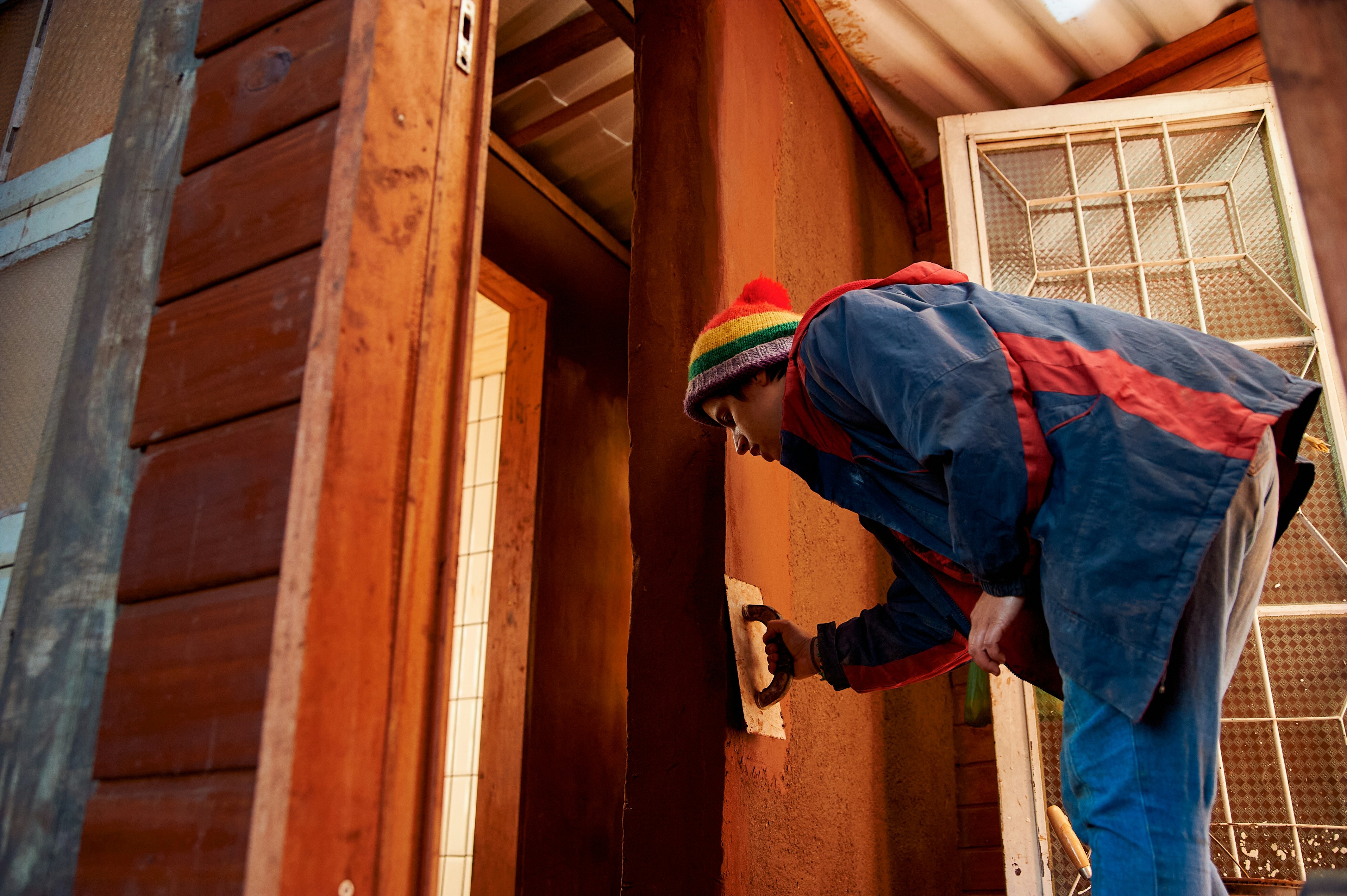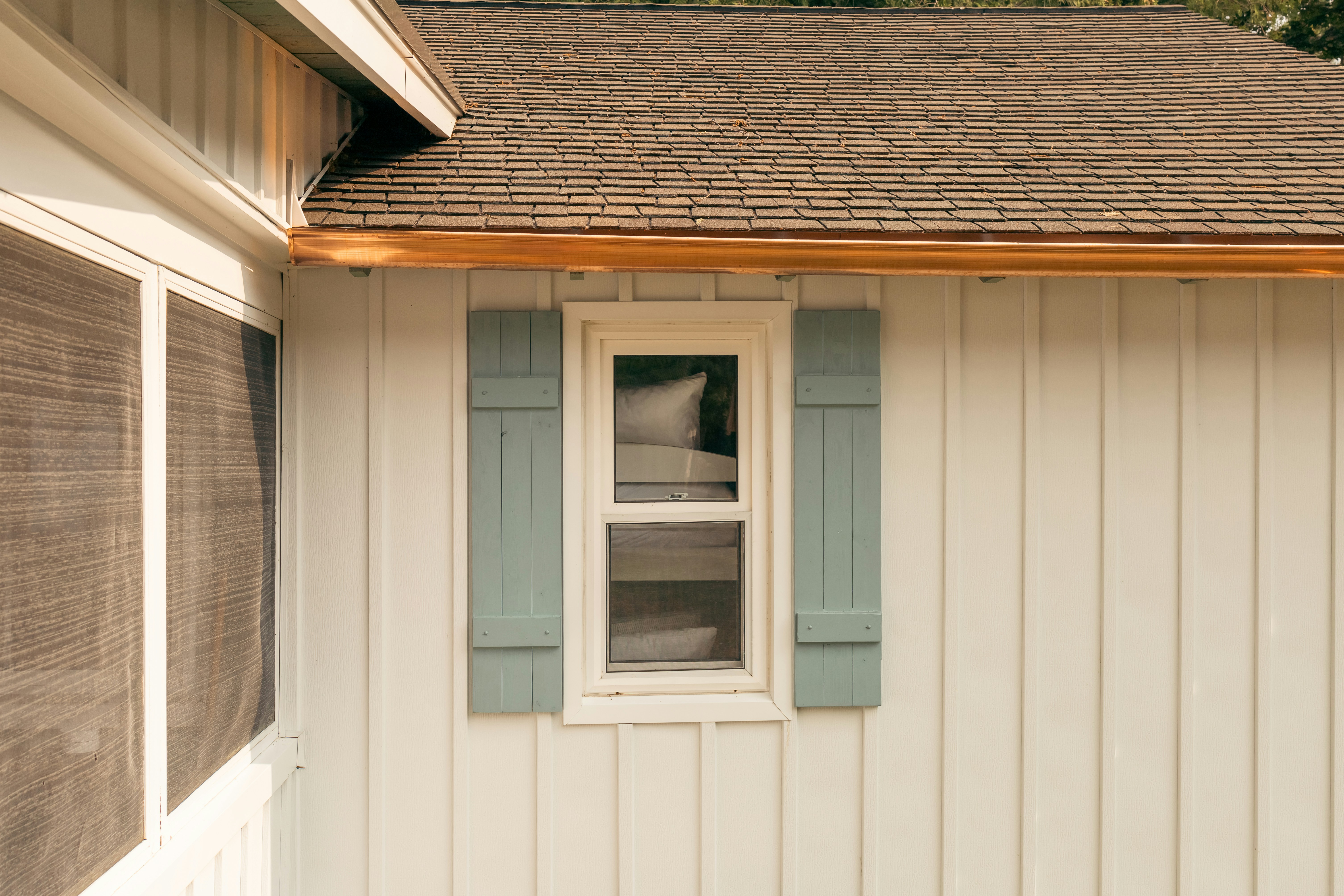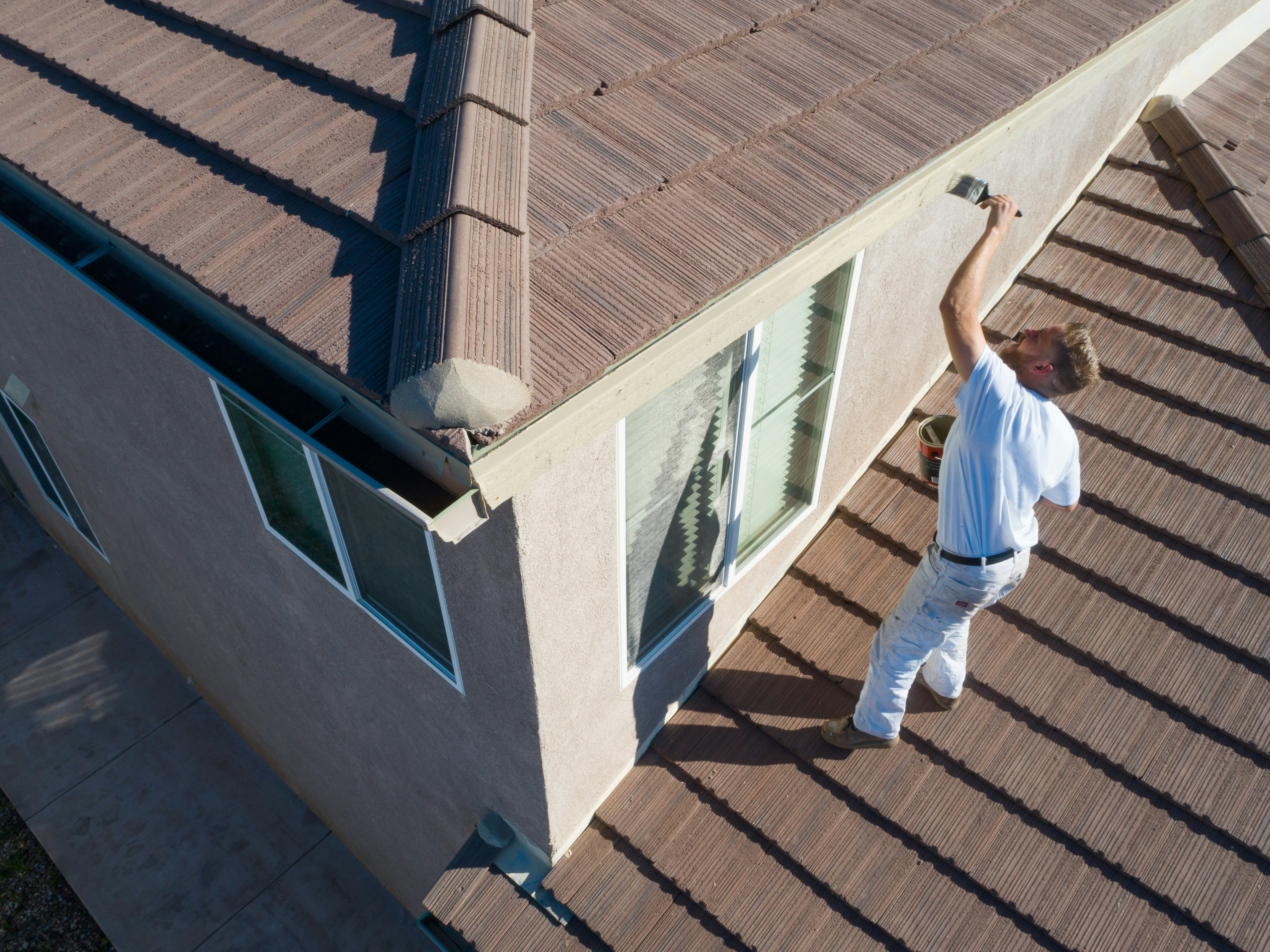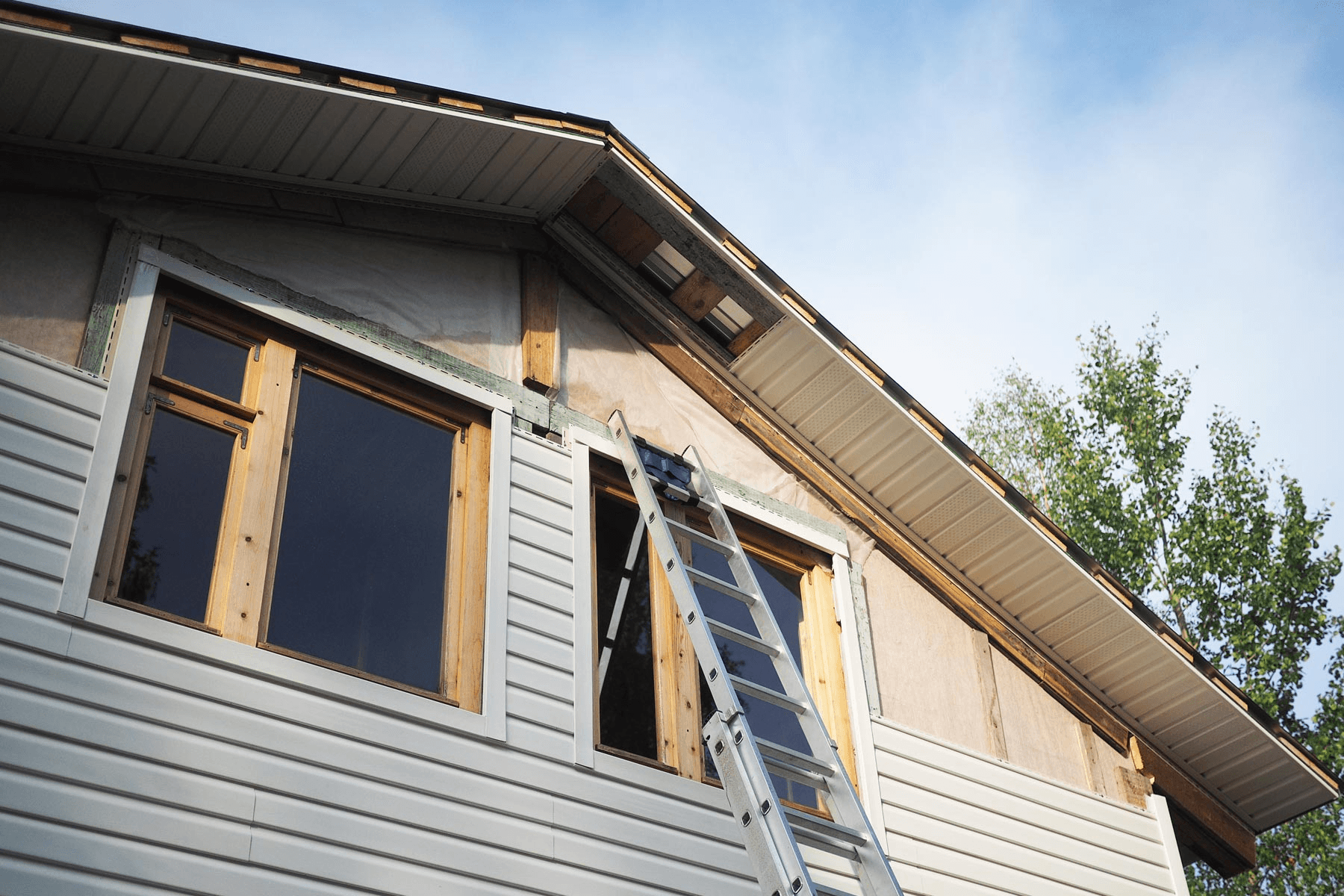
Siding can make or break a home's exterior, impacting both its appearance and structural integrity. When facing issues like damaged siding or extensive repairs, homeowners must decide between Siding Repairs or a full replacement, considering both options' financial implications.
Repairing siding is often the cost-effective choice, particularly for minor damages like small holes or cracks. For Vinyl Siding Repairs, patching or reattaching pieces can restore the appearance and functionality, maintaining curb appeal and avoiding the expense of new siding materials.
However, in cases of extensive damage or degraded materials, replacement may be necessary to ensure long-term durability. Below, we explore the financial aspects of Siding Repairs versus replacement, considering material costs, labor, and the potential for future maintenance to help homeowners make informed decisions.
Siding Repair Costs
Siding repair costs can vary depending on the type of siding and extent of damage. For Fiber Cement Siding, repairs might involve patching or replacing damaged panels. SIDING INSTALLATION for new materials may be necessary if Siding Damage is extensive, incurring higher costs. Below, we explore different factors influencing siding repair expenses.
Wood Siding Repair Cost
Repairing wood siding can vary significantly in cost, depending on the extent of the damage and the type of wood used. Small cracks or splits can often be addressed with a home repair, including filling or sealing, providing an easy fix. Large holes or rotted sections might require replacing panels, raising costs.
Replacing wood siding costs can vary based on the type of wood and labor involved. Premium wood, such as cedar or redwood, may incur higher costs, while pine offers a more budget-friendly option. These factors contribute to the overall expense, necessitating budgeting for both materials and labor.
Regular maintenance helps reduce wood siding repair costs over time, preventing larger issues from developing. This proactive approach preserves the siding's integrity, maintaining the home's appearance and functionality, reducing the likelihood of costly repairs or replacements.
Siding Cost Per Square Foot
Siding costs per square foot can vary based on the material and installation method. Vinyl siding offers a more affordable option, ranging from $3 to $7 per square foot, providing an easy fix for damaged sections. Higher-end materials, such as fiber cement, can cost between $10 to $12 per square foot.
The overall cost per square foot also includes labor and additional materials. Home repair projects might involve other expenses, including insulation or paint, contributing to the total. Large holes or extensive damage can raise costs, requiring new panels or comprehensive repairs.
Choosing the right material and balancing costs ensures effective repairs or replacements. This approach maintains the home's appearance and structural integrity, reducing future maintenance needs and preserving its value over time.
Vinyl Siding Repair Cost
Vinyl siding repair costs depend on the extent of damage and necessary repairs. Small cracks or splits can often be addressed with simple home repair techniques, including patching or sealing, offering an easy fix. For larger holes or more extensive damage, replacing individual panels might be necessary, increasing costs.
Replacing vinyl siding panels involves balancing material and labor costs. Premium vinyl may incur higher costs, while standard options offer a budget-friendly solution. These factors contribute to the total repair expense, necessitating budgeting for both materials and labor.
Regular maintenance helps prevent vinyl siding repair costs from escalating. This proactive approach preserves the siding's integrity, maintaining the home's appearance and functionality, reducing the likelihood of costly repairs or replacements over time.
Siding Repair Cost by Material
The cost of siding repair depends on the material used, affecting overall expenses. Vinyl siding repairs are generally more cost-effective, allowing homeowners to replace individual panels or patch small cracks, maintaining the siding's top shape. Wood or fiber cement siding might incur higher costs, particularly for larger repairs or replacements.
Repairing wood siding often involves more labor-intensive work, raising costs. Additionally, premium wood materials, such as cedar or redwood, can increase expenses further, particularly if large sections need replacing, necessitating careful budgeting to balance material and labor costs effectively.
Choosing a cost-effective solution helps maintain the siding's integrity over time. This balanced approach preserves the home's appearance and functionality, minimizing repair costs and extending the lifespan of different siding materials.
Siding Repair Cost by Type of Repair
The type of repair needed influences the overall cost, particularly for more extensive work. Minor fixes, such as patching small cracks or replacing individual panels, provide a cost-effective solution, maintaining the siding's top shape and reducing expenses for homeowners over time.
More intensive repairs, such as reattaching loose sections or addressing water damage, can increase costs. This work often requires specialized materials or techniques, necessitating careful budgeting to balance expenses and ensure comprehensive repairs that preserve the siding's integrity.
Regular maintenance helps prevent the need for major repairs, reducing costs over time. This proactive approach ensures the siding remains functional and presentable, maintaining the home's value and minimizing the likelihood of costly repairs or replacements.
Siding Replacement Costs
Siding replacement costs can vary significantly, depending on the material and extent of work needed. Homeowners might opt for full replacement in cases of extensive damage, ensuring the siding remains in top shape and preserving the home's appearance and functionality.
The material choice influences replacement costs, with vinyl or fiber cement offering more cost-effective solutions. Premium wood or composite materials may incur higher expenses, particularly for large-scale replacements, necessitating careful budgeting to balance material and labor costs.
Balancing replacement costs with regular maintenance helps preserve the siding's integrity, maintaining the home's value over time. This approach reduces the likelihood of further repairs, ensuring the siding remains functional and minimizing long-term maintenance needs.
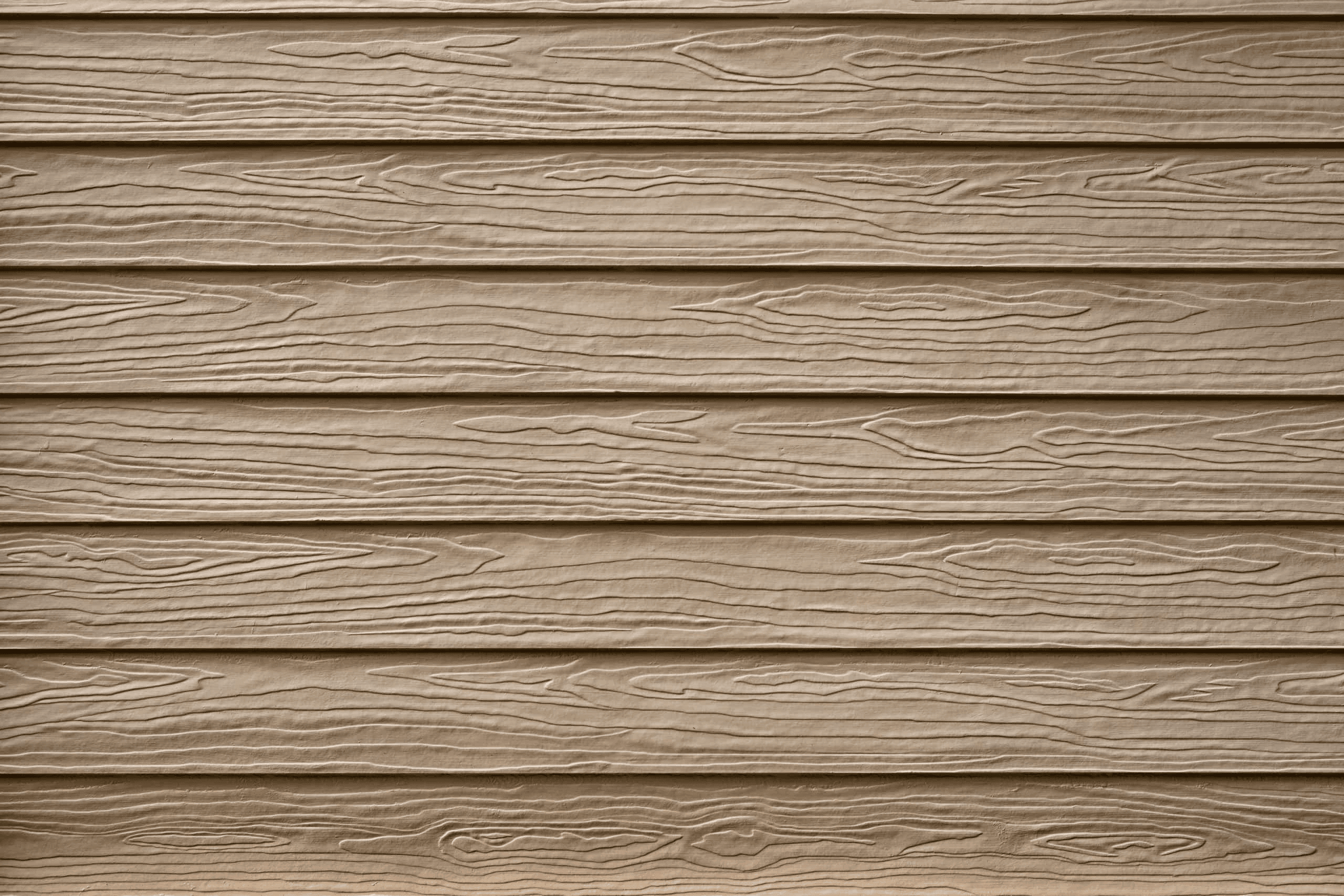
Repair Costs Vary by Siding Material
Repair costs for siding vary based on the material used. A DIY project involving vinyl siding offers a cost-effective solution, allowing homeowners to install replacement panels or patch small cracks easily. Wood or fiber cement repairs can be more labor-intensive, particularly when replacing panels with nails or adhesive.
Installing replacement panels can be straightforward for vinyl or fiber cement siding, particularly for small repairs. This balanced approach reduces costs by allowing homeowners to tackle minor repairs themselves, maintaining the siding's appearance and functionality over time.
More intensive repairs might require professional help, particularly for wood siding, which can necessitate precise work with nails or screws. This approach ensures comprehensive repairs, preserving the siding's integrity, maintaining the home's value, and minimizing future maintenance needs.
Questions You Might Have About Siding
Siding repairs or replacement often raise questions for homeowners, including how to handle debris, windows, or finding materials that match. Removing debris regularly helps maintain the siding's integrity, while ensuring windows are properly sealed prevents water damage. Below, we explore answers to common siding questions, helping guide homeowners through the repair process.
Can you replace just a few pieces of siding?
Yes, replacing a few pieces of siding is possible, particularly for minor damage or wear. This approach involves carefully removing damaged panels and installing new ones, maintaining the house's appearance and integrity. It's essential to ensure the new panels match in color and texture, seamlessly blending with the existing siding.
Regular inspections help identify areas needing replacement, preventing further damage from wind or weather conditions. This proactive approach maintains the siding's functionality and appearance, reducing the likelihood of more extensive repairs or replacements over time.
Replacing individual panels preserves the house's integrity and appearance, avoiding unnecessary expenses. This balanced approach helps homeowners manage maintenance needs effectively, ensuring the siding remains functional and presentable over time, extending its lifespan.
Is replacing siding a good investment?
Replacing siding can be a good investment, particularly for homes with extensive damage or outdated materials. New siding helps preserve the house's appearance and structural integrity, protecting it from weather elements like wind, rain, or snow, maintaining its value over time.
New materials also offer improved durability, reducing maintenance needs and extending the siding's lifespan. This balanced approach helps homeowners manage costs effectively, ensuring the siding remains functional and presentable, avoiding frequent repairs or replacements.
Additionally, new siding enhances curb appeal, increasing the house's value and making it more attractive to potential buyers. This proactive investment preserves the home's integrity, minimizing maintenance costs, and ensuring it remains a valuable asset over time.
Things You Should Know About Siding
Siding plays a crucial role in protecting a home's exterior, covering its walls and maintaining its appearance. A siding panel can be damaged by weather or accidents, necessitating repairs or replacement to maintain its integrity. Below, we explore essential information about siding, from materials to job costs, helping homeowners make informed decisions.
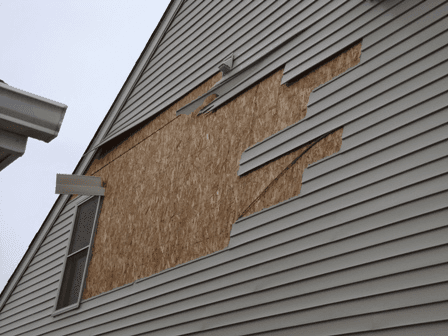
Signs It's Time to Repair Your Siding
Signs that it's time to repair your siding include visible cracks, peeling, or warping. These issues compromise the installed siding's integrity, leading to water damage or rot if left unchecked. Regularly inspecting the siding's surface helps identify problems early, preventing further damage and preserving the house's appearance and functionality.
Other signs include discoloration, indicating moisture or UV damage to the siding. Addressing these issues promptly helps prevent structural damage to the house, maintaining its value. This proactive approach reduces the need for extensive repairs or replacement, ensuring the siding remains functional over time.
Loose or missing panels also indicate the need for repairs, particularly if wind or weather has affected the siding's structure. Early intervention helps maintain the house's appearance, reducing the likelihood of costly repairs or replacements, preserving its integrity over time.
Seamless Vinyl Siding Repair is a Detailed Process
Repairing seamless vinyl siding is a detailed process, requiring precise work to maintain the siding's appearance and integrity. Removing damaged panels without affecting surrounding areas is crucial, ensuring new panels blend seamlessly into the existing surface, maintaining the house's exterior and avoiding mismatched sections.
Replacing panels involves carefully removing and installing new ones, ensuring a uniform look. This balance helps preserve the house's appearance, avoiding visible seams or inconsistencies, ensuring the siding remains functional and presentable, extending its lifespan.
Regular maintenance and repairs help prevent extensive damage, reducing the need for detailed work. This proactive approach maintains the siding's integrity, preserving the house's value and minimizing long-term costs, ensuring the exterior remains presentable over time.
Save on Siding Repair by Acting Early
Acting early on siding repairs helps save money and prevent further damage. Regularly inspecting the installed siding's surface identifies problems early, avoiding more extensive repairs or replacements, maintaining the house's value and appearance, reducing costs associated with long-term damage.
Early intervention also prevents structural issues, particularly if water or weather affects the siding. Repairing damage promptly helps preserve the house's integrity, ensuring the exterior remains functional and presentable, reducing the need for additional repairs or replacements.
Maintaining the siding's integrity over time reduces long-term maintenance needs, extending its lifespan. This proactive approach helps preserve the house's appearance, balancing costs effectively, ensuring the siding remains functional and presentable over time.
Choose Siding Replacement Over Frequent Repairs
Choosing siding replacement over frequent repairs can be more cost-effective in the long run. Replacing worn or damaged siding prevents recurring issues such as leaks, maintaining the house's integrity and appearance. This proactive approach reduces the need for constant repairs, ensuring the new siding remains functional and presentable.
Frequent repairs can indicate underlying issues, necessitating replacement. Insured replacements offer a comprehensive solution, preventing problems like leaks or faded panels that compromise the siding's integrity, preserving the house's value and reducing the likelihood of additional repairs.
Replacing the siding entirely also enhances curb appeal, providing a fresh look. This approach reduces maintenance needs, balancing costs effectively and maintaining the house's exterior over time, extending its lifespan and minimizing long-term repair costs.
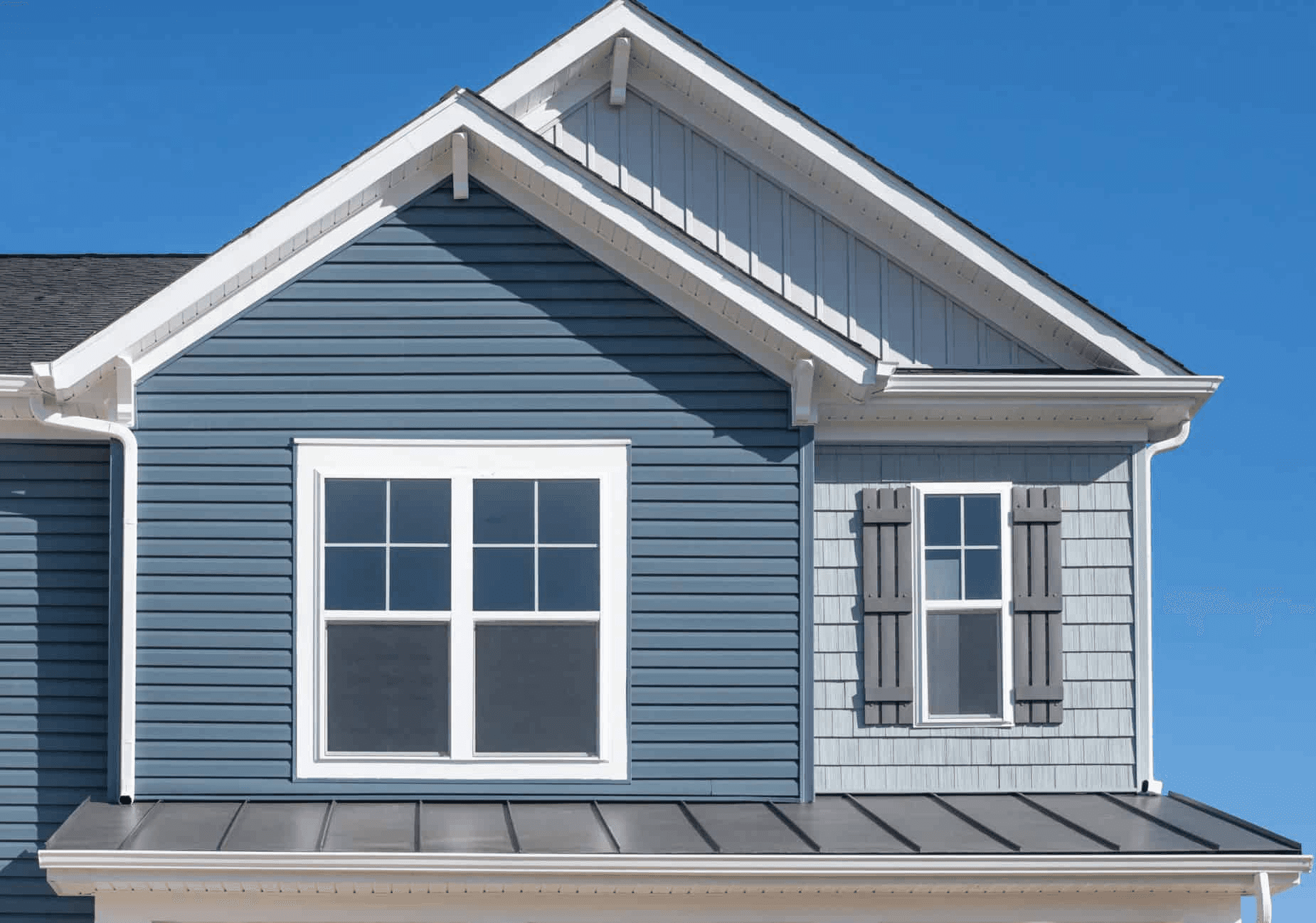
New Energy-Efficient Siding Can Save You Money Ongoing
New energy-efficient siding can save you money over time by reducing heating and cooling costs. This siding improves insulation, preventing heat loss or gain, ensuring the house remains comfortable year-round, reducing energy bills. This balanced approach maintains the house's integrity and functionality, reducing costs associated with frequent repairs.
Energy-efficient siding also prevents issues like leaks, maintaining the house's appearance and structural integrity. This comprehensive solution preserves the siding's functionality, reducing the likelihood of additional repairs or replacements, minimizing long-term maintenance needs.
Regular inspections and maintenance help preserve energy-efficient siding's effectiveness. This proactive approach maintains the siding's integrity, ensuring it remains functional and presentable, balancing costs effectively and minimizing the need for further interventions over time.
Choosing Siding Repair or Siding Replacement
Choosing between siding repair or replacement depends on the extent of the damage and the siding's condition. Faded panels, leaks, or frequent repairs might indicate the need for replacement, ensuring the siding remains functional and presentable, reducing long-term costs associated with maintenance or repairs.
Repairing minor issues can extend the siding's lifespan, avoiding the need for immediate replacement. Insured repairs offer a cost-effective solution, addressing problems like leaks or cracks promptly, preventing further damage, maintaining the siding's appearance and structural integrity.
Regular inspections help identify whether repairs or replacement are necessary. This proactive approach balances costs effectively, ensuring the siding remains functional and presentable, preserving the house's value and minimizing long-term maintenance needs.
Importance of Timely Repairs
Timely repairs are crucial for maintaining the siding's appearance and integrity, preventing further damage to the house. Addressing issues promptly, like cracks or chips in Stucco siding, prevents water infiltration, reducing the need for more extensive repairs, maintaining the house's value over time.
Timely repairs also help avoid structural damage. Putting off repairs can lead to larger problems, necessitating more costly interventions. Sanding or filling cracks early on ensures the siding's functionality, preventing further damage and preserving its appearance, reducing long-term maintenance needs.
Regular inspections help identify issues early, allowing for prompt repairs. This proactive approach prevents further damage, balancing costs effectively, ensuring the siding remains functional and presentable, preserving the house's integrity and minimizing the likelihood of costly repairs or replacements.

